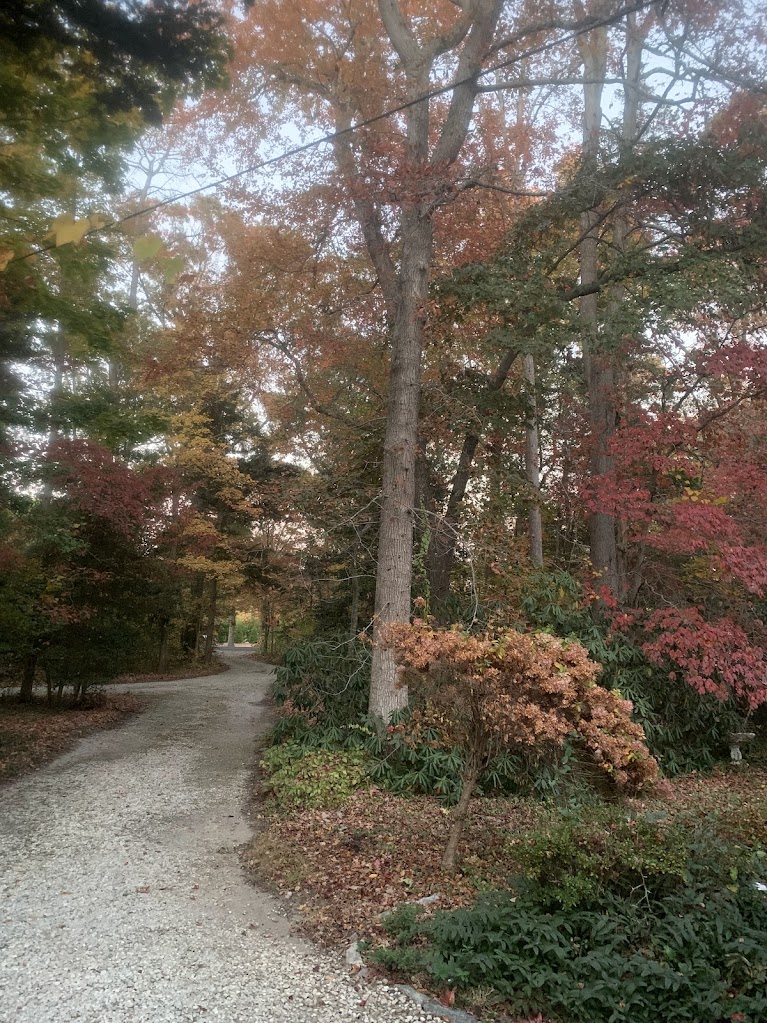Looking from where we park, across the green mass of vines on the fence that hides the side of the above ground pool. The mass of golden yellow, down low is Aesculus parviflora. Now a real colony of two distinct clones. One of these Buckeyes blooms about two weeks earlier than the other, so they may not hybridize, but there are many poisonous buckeyes, this year, and many that have started up from other years.
Taken from the front porch, the little tree shaped Peegee Hydrangea is on the left. Then the wild, typical white flowered Dogwood. Then the equally reddish Viburnum mariessi, and closest and overhead, the old red flowered Dogwood, planted the first year we got here.
Never really work, this season, blowing the leaves off the drive must be done every couple of days. But the woods are beautiful and, today, the weather was perfect.
Epimedium sufureum. Unusual that one tiny sprout has taken on red. The leaves will endure, but are so ratty by February that I string trim them to the ground. Within a month or so from that, the yellow flowers, that would often be hidden by the leaves, will make a cloud above the ground.
This if Fothergilla 'Mt Airey'. The extended drought has influenced how the leaves have colored up this year, but this is the typical for this individual, growing in a lot of shade.
This is a clone of Fothergilla, species unknown, with an unusual blue-gray tone. F. 'Blue Shadow'. The seller said it did not color well, but it always has for me.
Only grown for the strange little spider-like flowers in the dead of Winter, but the Witch-hazels are a fine gold now. The dark green of Cornus mas, to the right, contrasts.
Acer planatum, Japanese Maple 'Fjelheim' is old enough that the trunk no longer has the amazing red bark, and now it is showing the typical apricot color of Fall. The smaller twigs will show the red, after the leaves are gone. Another point of interest for this clone is that it is a dwarf. Actually a propagated Witches Broom growth from the red barked 'Sanga Kaku'.












Great pics.
ReplyDelete